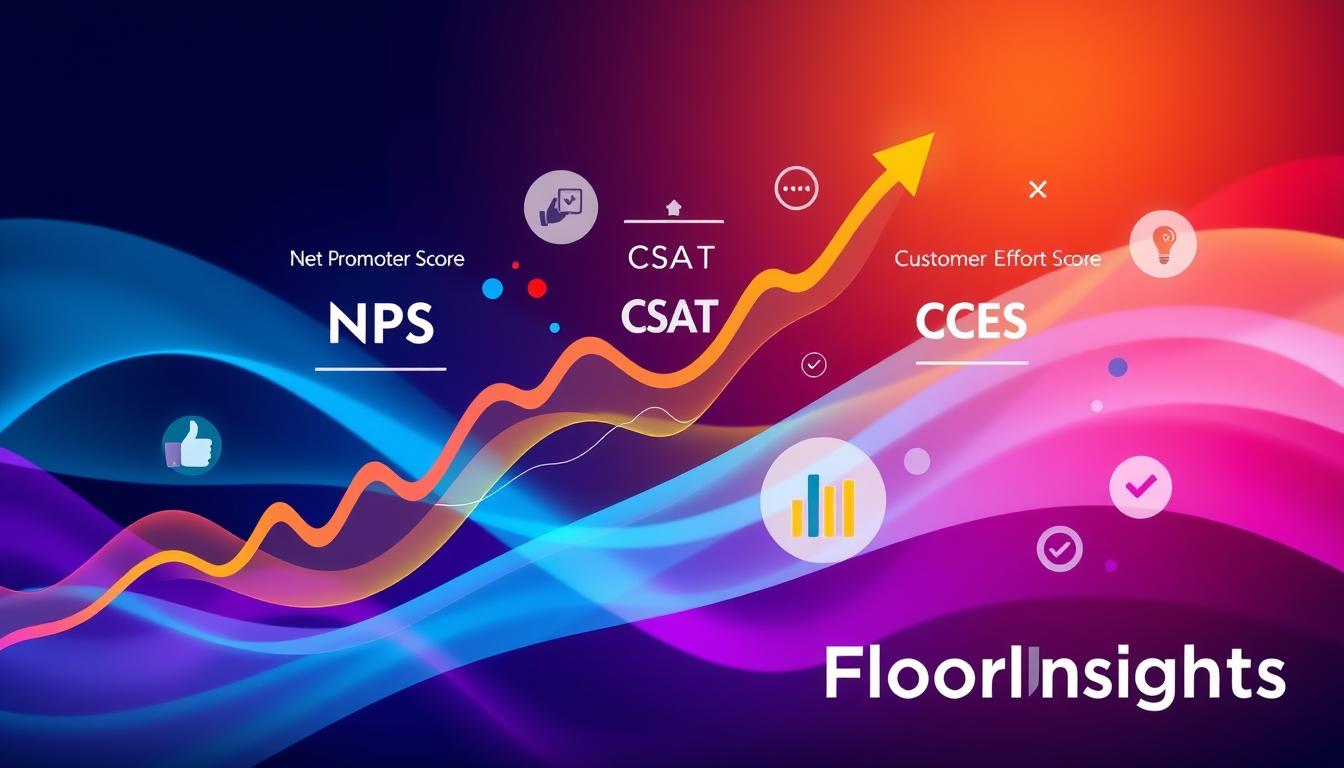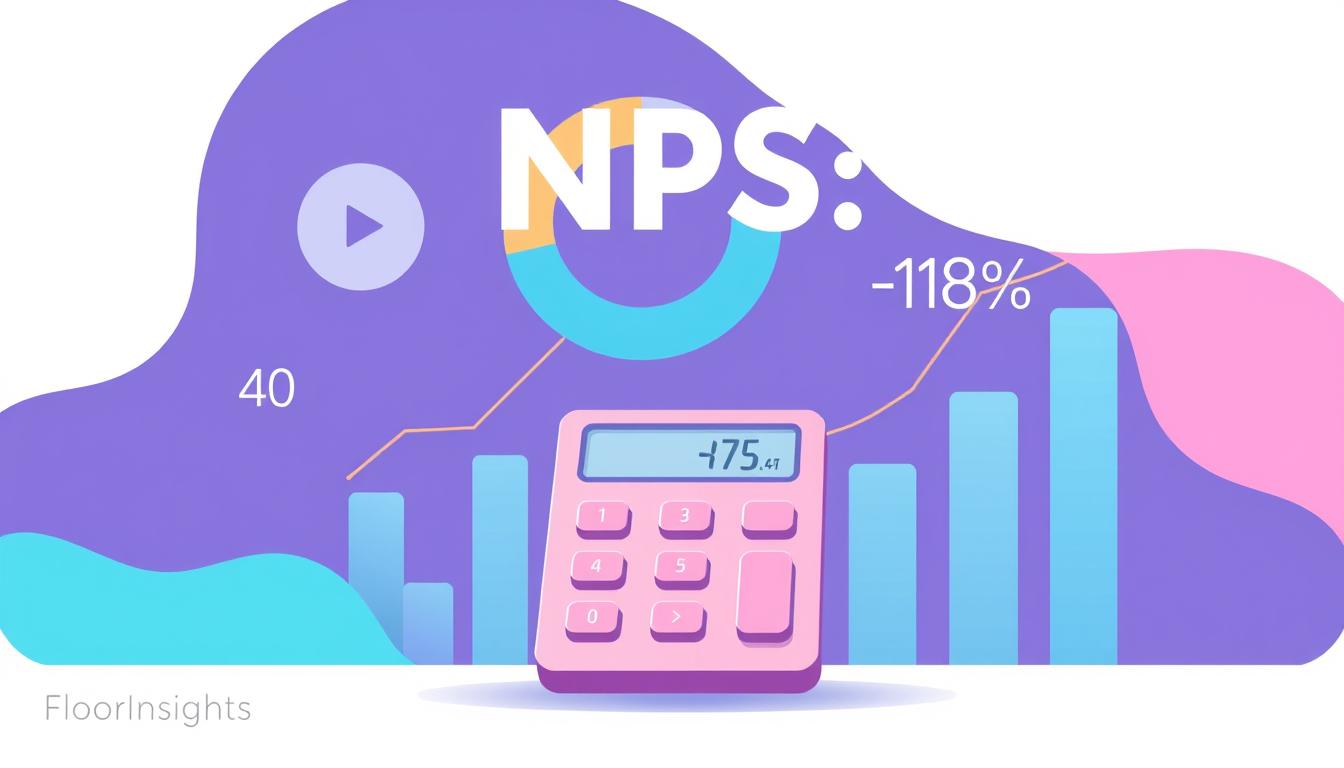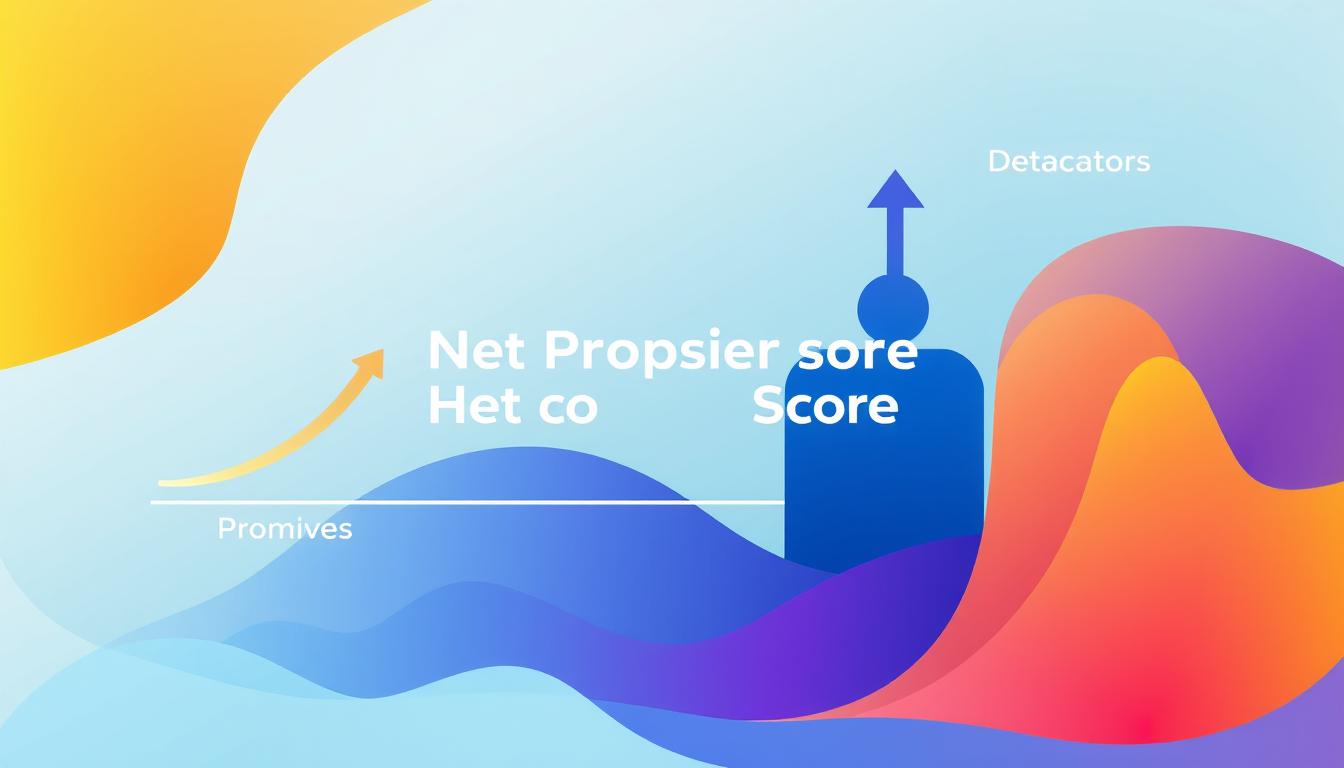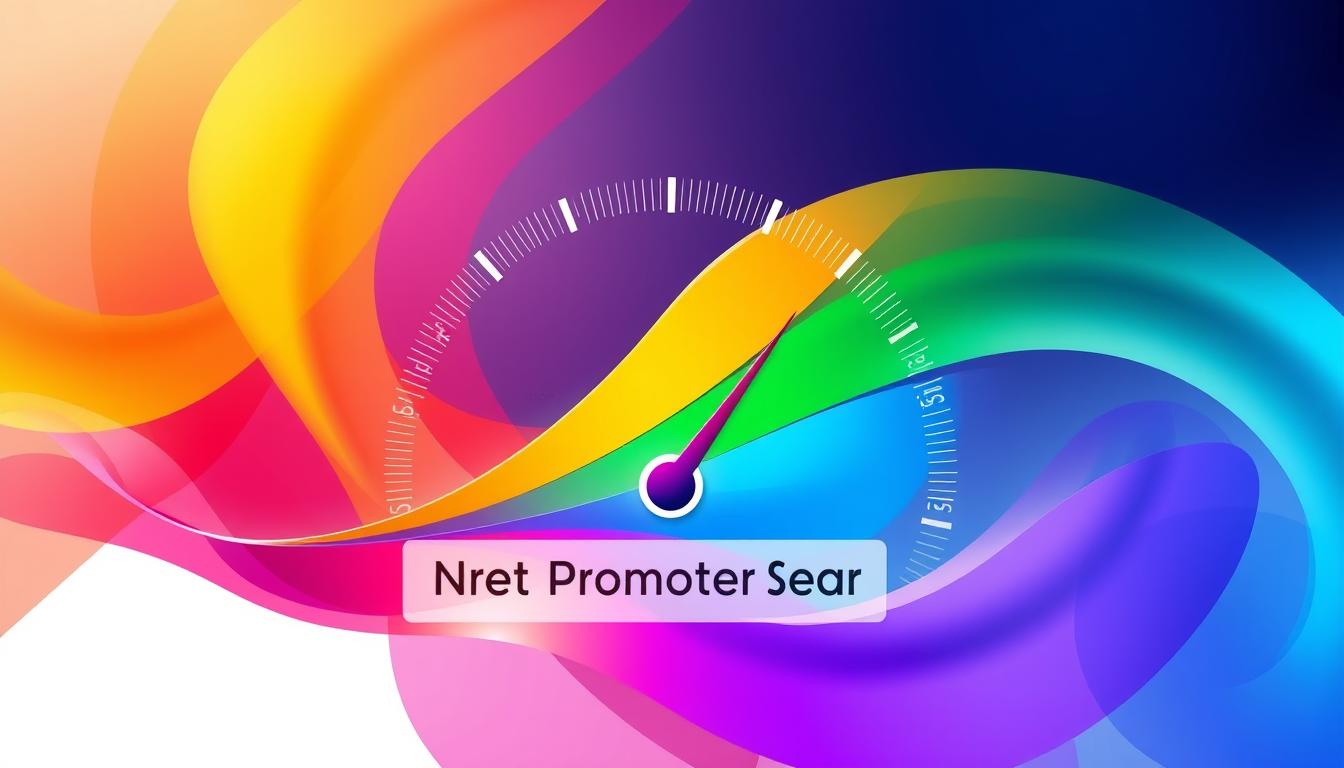In the dynamic landscape of customer experience, tracking the right metrics is crucial for understanding customer loyalty and driving business success. One such vital metric is the Net Promoter Score (NPS), a key indicator of overall customer satisfaction and loyalty. However, NPS isn’t an isolated measure. It works in tandem with other pivotal customer experience (CX) metrics like the Customer Satisfaction Score (CSAT) and Customer Effort Score (CES) to provide a balanced view of customer sentiment.
In this article, we will delve into how NPS connects with CSAT and CES, illustrating the synergy between these metrics. By understanding their collective impact, businesses can better gauge customer loyalty and refine their strategies for enhanced customer experience.
Key Takeaways
- NPS is an essential metric for measuring customer loyalty.
- CSAT focuses on customers’ immediate satisfaction with products or services.
- CES measures the ease of customer interactions with your business.
- Integrating NPS, CSAT, and CES provides a comprehensive view of customer sentiment.
- Analyzing these metrics collectively helps in formulating effective CX strategies.
Understanding Net Promoter Score (NPS)
Net Promoter Score (NPS) serves as a pivotal metric in understanding overall customer sentiment towards a brand. Pioneered by Bain & Company, NPS provides insights into customer loyalty and the likelihood of brand advocacy. The metric asks a straightforward yet potent question: “On a scale of 0 to 10, how likely are you to recommend our company to a friend or colleague?” This offers a clear, quantifiable measure of customer loyalty.
What is NPS?
In essence, NPS is calculated by subtracting the percentage of detractors (those who score 0-6) from the percentage of promoters (those who score 9-10). This simple calculation provides a net score ranging from -100 to +100, serving as a barometer of customer satisfaction and loyalty. As Harvard Business Review articulates, this metric allows businesses to gauge their customers’ likelihood to promote their brand and thus predict potential organic growth.
Customers who score 7-8, known as passives, are not factored into the NPS calculation but offer valuable insights nonetheless. By identifying these segments through the NPS survey, companies can target strategies aimed at converting passives into promoters, enhancing their overall customer relationship management efforts.
The Importance of NPS in Customer Experience
Understanding the significance of NPS goes beyond mere numbers. When effectively integrated with customer relationship management systems, it becomes a predictive tool for business growth and customer retention. Industry case studies have repeatedly shown that businesses with higher NPS scores tend to exhibit stronger, more enduring customer relationships.
Moreover, consistently high NPS scores often reflect effective customer relationship management practices, leading to enhanced customer loyalty and brand advocacy. By frequently conducting NPS surveys and acting on the feedback, companies can create a virtuous cycle of continuous improvement and customer satisfaction.
CSAT: Customer Satisfaction Score Explained
When striving for excellent customer satisfaction, it is crucial to understand the Customer Satisfaction Score (CSAT) and its significance. This metric gauges how content customers are with a company’s products or services. Typically, CSAT is measured by asking customers to rate their satisfaction on a scale from 1 to 5, where 1 symbolizes extreme dissatisfaction and 5 represents utmost satisfaction.
One of the primary benefits of CSAT is its ability to provide immediate customer feedback. By capturing real-time reactions, companies can swiftly address concerns and implement changes to enhance customer experiences. To underscore the importance and utility of CSAT, let’s delve into data from two reputable sources:
| Source | Benchmark Data | Industry-Specific Insights |
|---|---|---|
| American Customer Satisfaction Index (ACSI) | Provides an overall benchmark of consumer satisfaction across various sectors in the United States. | Reveals areas where sectors like e-commerce and banking excel or need improvement. |
| J.D. Power | Offers detailed analyses through surveys focused on particular industries, such as automotive and telecommunications. | Highlights customer satisfaction levels and key drivers within specific markets. |
Through comprehensive assessments presented by ACSI and J.D. Power, businesses can gain valuable insights to refine their strategies and improve customer satisfaction. By giving due importance to CSAT, we can foster a customer-centric culture that prizes continuous improvement pivoted on genuine customer feedback.
Customer Effort Score (CES): A Comprehensive Overview
Understanding the Customer Effort Score (CES) and its implications for customer experience is pivotal for businesses aiming to enhance their service quality and foster customer loyalty. Initially introduced by CEB, now part of Gartner, CES emphasizes the ease with which customers can accomplish their goals during interactions with a company.
Definition of CES
The Customer Effort Score measures the effort exerted by customers to resolve issues, make purchases, or access services. It is typically gauged through survey responses where customers rate the ease of their interaction on a scale, often from “Very Difficult” to “Very Easy.” This metric provides insight into the friction points within the customer journey.
Why CES is Crucial for Measuring Customer Effort
Tracking the Customer Effort Score is instrumental in understanding barriers that customers face, which directly impacts their overall customer experience. According to Harvard Business Review, reducing effort is more effective than delighting customers in fostering loyalty. High CES indicates potential areas for improvement that, once addressed, can dramatically enhance customer satisfaction and retention.
Connecting NPS with CSAT
In the realm of customer experience, it is crucial to understand how NPS (Net Promoter Score) and CSAT (Customer Satisfaction Score) can complement each other. Both metrics serve distinct purposes but ultimately provide valuable insights into different aspects of customer loyalty and satisfaction. By leveraging customer feedback, businesses can craft a nuanced strategy that identifies both strengths and weaknesses.
Combining NPS with CSAT enables us to achieve a more comprehensive understanding of our customers’ experiences. NPS helps in gauging the likelihood of customers recommending our brand to others, while CSAT directly measures their satisfaction with specific interactions or products. These metrics, when used in tandem, offer a multifaceted view of customer feedback.
Using both NPS and CSAT can help reveal deeper insights. For instance, a high CSAT might indicate great short-term satisfaction, but a lower NPS could signal underlying issues that might affect long-term loyalty.
Analyzing data from both metrics allows us to pinpoint the areas where we excel and the aspects that need improvement. For instance, a company like Apple uses NPS to measure overall brand loyalty and CSAT for specific product lines, enabling them to refine their approaches at both a macro and micro level. This dual approach ensures a more holistic view of the customer experience.
| Metric | Focus | Objective |
|---|---|---|
| NPS | Customer loyalty | Predict long-term growth |
| CSAT | Customer satisfaction | Assess immediate satisfaction |
Through diligent analysis of customer feedback, we can tailor our efforts to improve overall customer experience. By addressing both the immediate satisfaction (CSAT) and long-term loyalty (NPS), we can build stronger, more lasting relationships with our customers.
How NPS Correlates with CES
In today’s competitive market, understanding the correlation between NPS and CES is critical. These metrics are powerful tools in evaluating customer loyalty and the overall customer experience. Combining insights from an NPS survey with the customer effort score offers a comprehensive view of how customers perceive and interact with your brand.
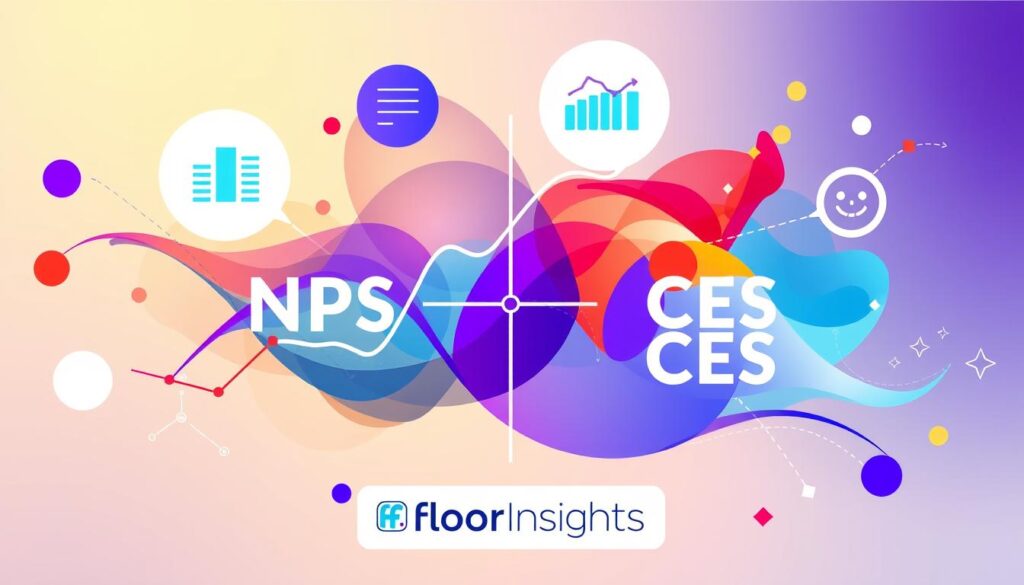
The Relationship Between NPS and CES
When we delve into the relationship between NPS and CES, it’s apparent that both metrics serve different yet complementary purposes. The NPS survey gauges customer loyalty by asking how likely customers are to recommend your brand, while the customer effort score measures the ease of customer interactions. A positive correlation between these two scores often signifies a seamless customer experience, where high customer loyalty is driven by minimal effort on the customer’s part.
Measuring CES Across Various Customer Journeys
Measuring CES at various touchpoints of a customer’s journey provides actionable insights that can enhance customer loyalty. By deploying CES metrics at strategic stages—such as during product purchases, customer service interactions, and after-sales support—we can pinpoint areas requiring improvement. This granular approach not only highlights friction points but also aligns closely with NPS survey results, offering a holistic perspective on customer experience.
| Touchpoint | CES Score | NPS Score | Insights |
|---|---|---|---|
| Product Purchase | 8 | 9 | High satisfaction; minimal effort perceived |
| Customer Service | 5 | 6 | Moderate effort; potential improvement needed |
| After-Sales Support | 7 | 8 | Generally positive; room for optimization |
In conclusion, integrating NPS and CES metrics is vital for any organization aiming to improve customer loyalty and overall satisfaction. By understanding this correlation, we can create effective strategies that enhance every phase of the customer journey.
Benefits of Integrating NPS, CSAT, and CES
By integrating Net Promoter Score (NPS), Customer Satisfaction Score (CSAT), and Customer Effort Score (CES), businesses can achieve a more comprehensive view of customer experience. This integrated approach enhances our ability to manage customer relationship management by providing a complete understanding of customer sentiments and experiences.
- Holistic Customer Insights: Each metric highlights a distinct aspect of the customer journey. NPS focuses on loyalty and likelihood to recommend, CSAT measures satisfaction post-interaction, and CES tracks the effort required to resolve issues. Together, they paint a full picture of customer experience.
- Enhanced Decision Making: With comprehensive data from NPS, CSAT, and CES, decision-makers can identify trends and issues with greater accuracy. This integration provides actionable insights, allowing for more effective strategies in brand advocacy and customer support.
- Improved Customer Retention: By correlating these metrics, businesses can better understand the factors driving customer satisfaction and loyalty. This knowledge enables us to implement targeted interventions, ultimately reducing churn and fostering lasting customer relationships.
Insights from industry leaders like HubSpot and Salesforce reveal that businesses utilizing an integrated approach to these metrics often see significant improvements in customer retention and satisfaction. These improvements translate directly into stronger brand advocacy and a more loyal customer base.
Case studies further illustrate the impact of merging NPS, CSAT, and CES. For instance, companies such as Amazon and Apple have successfully employed these metrics together to drive customer-centric strategies, resulting in higher levels of customer loyalty and advocacy.
Ultimately, integrating NPS, CSAT, and CES is a powerful strategy for effective customer relationship management. This comprehensive approach ensures that we consistently deliver exceptional customer experiences, fostering a culture of continuous improvement and long-term success.
Using NPS Surveys to Improve Customer Experience
Implementing an effective NPS survey can significantly enhance the customer experience. By following a robust methodology and accurately interpreting the results, businesses can gain actionable insights into their customer satisfaction levels and areas for improvement.
Best Practices for Conducting NPS Surveys
To maximize the value derived from an NPS survey, it is essential to follow best practices. We recommend:
- Timely Surveys: Conduct surveys immediately after the customer interaction to capture real-time feedback.
- Clear and Simple Questions: Use straightforward questions that are easy to understand to ensure higher response rates and accurate data.
- Segment Analysis: Analyze feedback at various customer journey points to identify specific areas of strength and improvement.
Interpreting NPS Survey Results
Interpreting the results of an NPS survey is crucial for leveraging the gathered data effectively. Here are key strategies:
- Determine Promoters, Passives, and Detractors: Classify responses to understand different customer segments.
- Analyze Customer Feedback: Dive deep into comments to uncover underlying sentiments and issues.
- Action Plan Development: Use insights to create strategic action plans aimed at improving overall customer experience.
Leaders such as SurveyMonkey and Forbes provide valuable insights and methodologies to enhance customer feedback collection and interpretation.
| Practice | Benefit | Example |
|---|---|---|
| Timely Surveys | Captures immediate feedback | Post-purchase surveys |
| Clear Questions | Increases response accuracy | Simple Likert scale questions |
| Segment Analysis | Identifies specific strengths and weaknesses | Analyzing feedback by interaction type |
Leveraging Customer Feedback to Enhance Customer Retention
Understanding and leveraging customer feedback is integral to enhancing customer retention. By analyzing feedback gathered from Net Promoter Score (NPS), Customer Satisfaction Score (CSAT), and Customer Effort Score (CES) metrics, we can identify patterns and areas of improvement across our business ecosystem. This insight assists us in tailoring strategies that not only address pain points but also amplify positive experiences.
Actionable feedback is critical. To effectively use customer feedback, we must look beyond numbers and delve into qualitative insights. Categorizing feedback into themes helps us prioritize issues and assign resources accordingly. For instance, consistently poor ratings in service quality can lead us to deploy additional training for service staff or improve automated solutions to resolve common queries seamlessly.
- Identify recurring themes in customer feedback.
- Prioritize issues based on their impact on customer experience.
- Allocate resources to areas needing immediate attention.
- Implement changes and monitor subsequent feedback for improvement.
Moreover, linking feedback to specific customer journeys helps pinpoint the exact stage where intervention is needed. This granularity assists in enhancing customer retention by ensuring each interaction is optimized. Collaborating with teams across departments ensures that the feedback loop is continuous and iterative, making our customer success initiatives more effective.
To summarize, customer feedback is a powerful tool that can significantly enhance customer retention. When we act on this data, we move from reactive problem solving to proactive customer satisfaction. This paradigm shift enables us to consistently meet and exceed customer expectations, fostering loyalty and long-term engagement.
Role of Customer Sentiment Analysis in NPS, CSAT, and CES
Understanding and analyzing customer sentiment is crucial for enhancing various customer experience metrics such as NPS, CSAT, and CES. Customer sentiment analysis enables us to gauge the emotions and opinions expressed by our customers, providing deeper insights that numerical scores alone cannot offer.
By integrating customer sentiment analysis with NPS, CSAT, and CES, we can develop a more nuanced understanding of customer feedback. This process involves examining customer interactions, reviews, and other communications to discern patterns in satisfaction and effort scores.
Techniques for Analyzing Customer Sentiment
Several techniques are employed for effective customer sentiment analysis:
- Natural Language Processing (NLP): This involves the use of algorithms to parse customer comments and identify positive, negative, or neutral sentiments.
- Text Analytics: This technique examines word frequency and context to uncover common themes in customer feedback.
- Social Listening Tools: These platforms, like Brandwatch and Hootsuite, monitor social media for mentions and sentiments associated with our brand.
- Machine Learning Models: Advanced models learn from existing data to predict sentiment in new customer interactions.
Impact of Sentiment Analysis on Customer Experience
Implementing sentiment analysis substantially impacts the customer experience. By aligning customer sentiment with NPS, CSAT, and CES, we can identify pain points and areas of improvement more effectively. Insights from customer sentiment analysis allow us to tailor our strategies to better address customer needs and drive positive experiences.
Ultimately, combining traditional metrics with customer sentiment analysis provides a comprehensive view of customer experience, leading to more informed decision-making and improved customer satisfaction.
Conclusion
As we bring this discussion to a close, it’s evident that the Net Promoter Score (NPS), along with Customer Satisfaction (CSAT) and Customer Effort Score (CES), form the bedrock of a robust customer relationship management strategy. These metrics are invaluable for assessing customer loyalty and gleaning insights that can drive meaningful improvements in customer interactions.
The harmonious integration of NPS, CSAT, and CES enables businesses to capture a more comprehensive view of their customer experience landscape. While NPS measures the likelihood of customer advocacy, CSAT evaluates immediate satisfaction, and CES gauges the ease of customer interactions. Together, they provide a powerful trifecta for understanding and optimizing customer journeys.
To cultivate unwavering customer loyalty, organizations must effectively use these metrics to pinpoint areas for enhancement and implement targeted strategies. By leveraging customer feedback and analyzing customer sentiment, companies can forge deeper connections with their clientele, resulting in sustained growth and success. Let’s use these insights to build stronger, trust-based relationships with our customers, ensuring their needs and expectations are consistently met.
FAQ
What is the Net Promoter Score (NPS) and how is it calculated?
Net Promoter Score (NPS) is a customer loyalty metric that assesses the likelihood of customers recommending a company’s products or services. It is calculated by asking customers to rate their likelihood of recommending the company on a scale of 0 to 10, then subtracting the percentage of detractors (0-6) from the percentage of promoters (9-10). This metric was developed by Bain & Company and has been widely studied for its predictive power regarding customer loyalty and business growth.
Why are Customer Satisfaction Score (CSAT) and Customer Effort Score (CES) important?
Customer Satisfaction Score (CSAT) measures a customer’s immediate reaction to a company’s products or services, helping businesses understand specific touchpoints. Customer Effort Score (CES), on the other hand, assesses how much effort a customer has to expend to achieve a particular outcome, making it pivotal in understanding friction points in customer interaction. Both metrics, along with NPS, provide comprehensive insights into the customer experience, driving improvements in customer satisfaction, loyalty, and brand advocacy.
How does NPS correlate with customer loyalty?
NPS is a strong indicator of customer loyalty because it measures the likelihood of customers recommending your brand to others. A high NPS suggests a large proportion of promotors actively advocating for the brand, which typically correlates with high levels of customer retention and business growth.
What is the role of Customer Sentiment Analysis in NPS, CSAT, and CES?
Customer Sentiment Analysis involves evaluating customer feedback to determine their emotions and attitudes. This analysis enriches NPS, CSAT, and CES data by providing deeper insights into customer emotions and experiences, allowing companies to tailor their strategies to enhance overall customer experience and satisfaction.
How can NPS, CSAT, and CES be integrated for better customer relationship management (CRM)?
By integrating NPS, CSAT, and CES, businesses can gain a holistic view of the customer experience. NPS gauges overall loyalty, CSAT captures satisfaction at specific touchpoints, and CES identifies areas where customers face hurdles. Combined, these metrics help in crafting targeted strategies to improve customer retention and foster stronger customer relationships, facilitating effective CRM.
What are best practices for conducting NPS surveys?
Best practices for conducting NPS surveys include timing the survey optimally (e.g., after a purchase or interaction), keeping the survey concise, personalizing questions when possible, and ensuring anonymity to get honest feedback. Using a consistent scale and frequently analyzing the data to make informed decisions are also crucial to leveraging NPS effectively.
How can we effectively use customer feedback to enhance customer experience?
Customer feedback should be systematically collected and analyzed to identify trends and pain points. Actionable insights can then be drawn to inform customer success initiatives, refining products, services, and interactions based on customer needs and preferences. This approach not only improves customer experience but also enhances loyalty and retention.
Why is it important to measure CES across various customer journeys?
Measuring CES across different customer journeys helps identify specific interactions where customers may experience friction or challenges. By understanding where customers exert the most effort, businesses can optimize these touchpoints to make processes more efficient and user-friendly, thereby improving overall customer satisfaction and loyalty.
How do NPS and CES together provide a rounded view of customer loyalty?
NPS gives a broad measure of loyalty and likelihood to recommend the brand, while CES highlights the effort customers have to make in dealing with the company. Together, they offer insights into both the emotional and practical aspects of customer experience, providing a more complete picture of customer loyalty and potential areas for improvement.
What are the benefits of integrating NPS, CSAT, and CES metrics?
Integrating NPS, CSAT, and CES metrics provides a comprehensive view of the customer experience from multiple angles. This approach helps businesses identify strengths and weaknesses, fostering informed decision-making and strategic planning. The combined data can drive improvements in customer satisfaction, loyalty, and advocacy, leading to enhanced customer relationship management and long-term business success.
Related Posts
- How Retailers Can Use NPS to Improve Product Offerings – NPS in Retail
- How NPS Drives the Success of Loyalty Programs – NPS and Loyalty Programs
- How to Use NPS Feedback Loops to Enhance Customer Experience – NPS and Customer Feedback Loops
- How NPS Reflects the Quality of Your Customer Service – NPS in Customer Service

